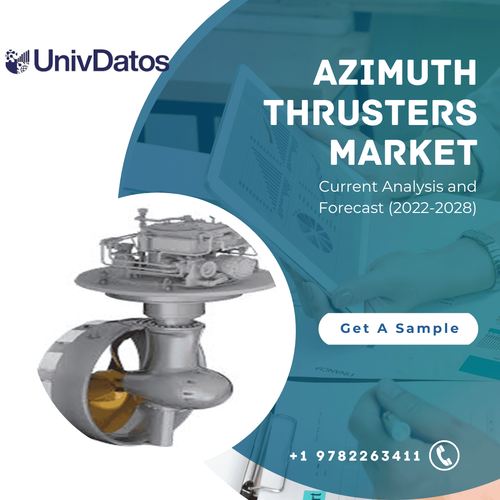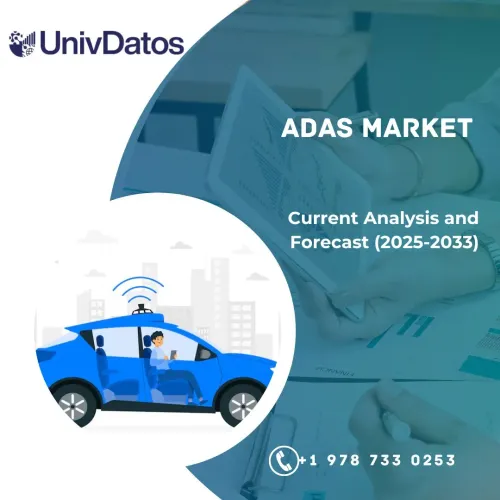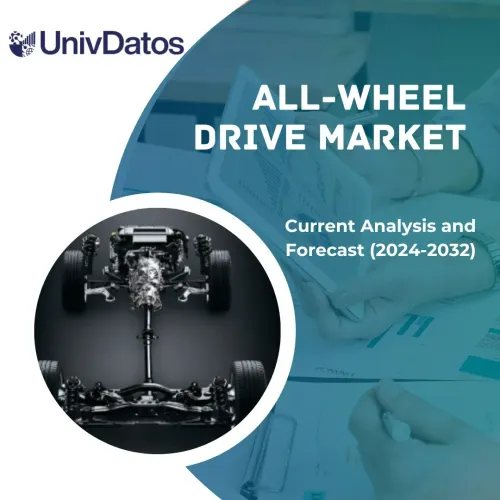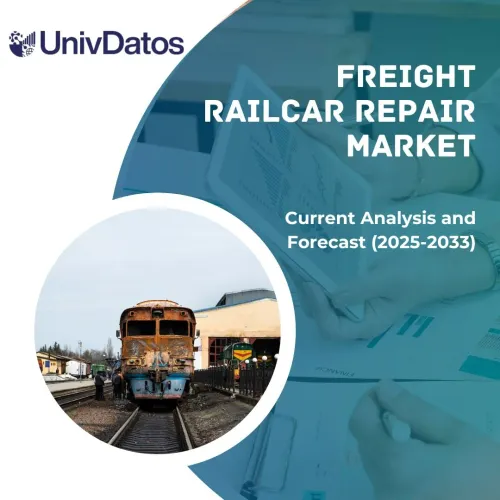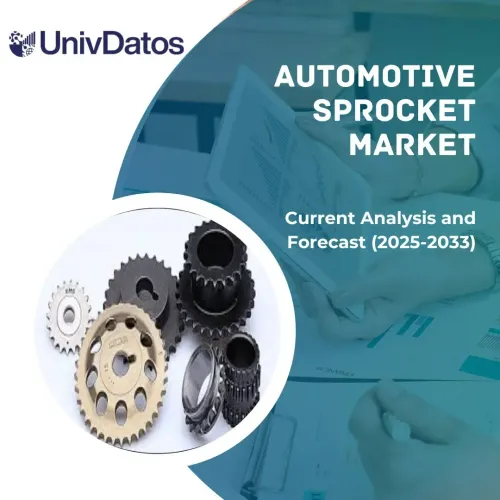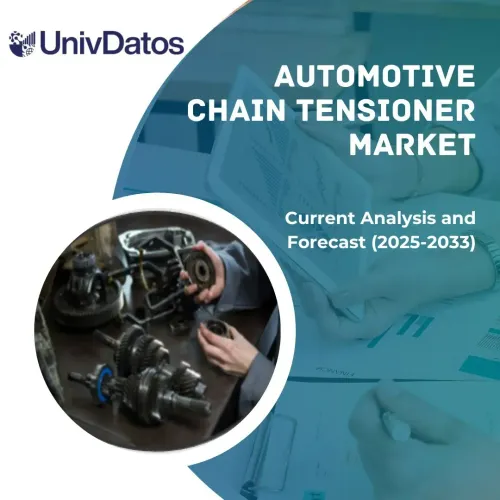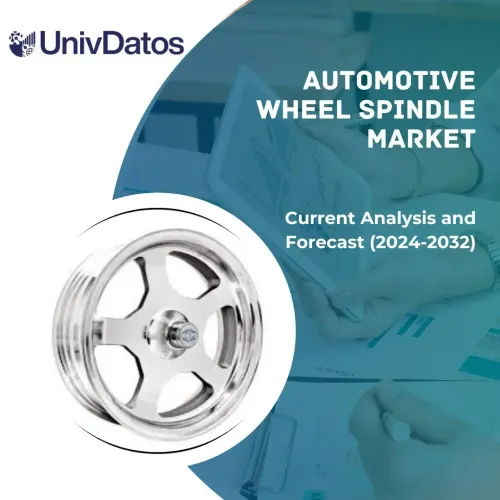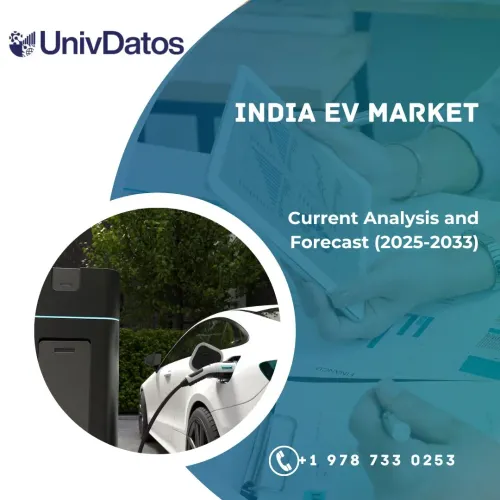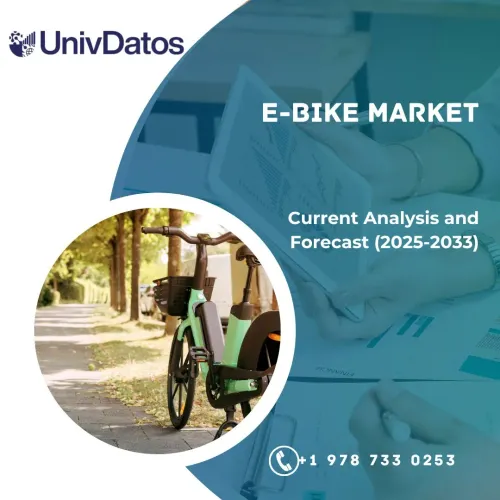- Home
- About Us
- Industry
- Services
- Reading
- Contact Us
Automotive Aluminum Market: Current Analysis and Forecast (2022-2028)
Emphasis on Product Form (Cast Aluminum, Rolled Aluminum, Extruded Aluminum, and Others); Vehicle Type (Passenger Car, LCV, and HCV); Application (Car Body, Chassis & Suspension, and Powertrain); and Region/Country
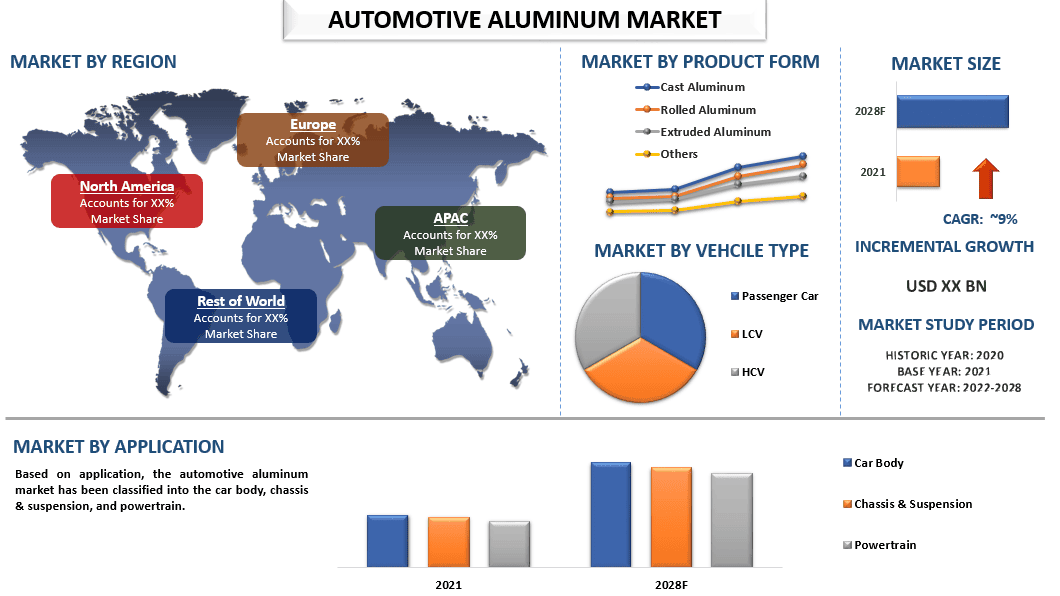
Global Automotive Aluminum Market is expected to grow at a significant rate of around 9% during the forecast period. Automotive Aluminum refers to the use of aluminum in the production of vehicles and automotive components. Aluminum is widely used in the automotive industry due to its lightweight, high-strength, and corrosion-resistant properties. Automotive aluminum is used in the manufacturing of various components and systems in vehicles, including body structures, engines, transmissions, wheels, and suspension systems. The use of aluminum in the automotive industry helps to reduce the weight of vehicles, resulting in improved fuel efficiency and reduced emissions. Additionally, aluminum can be molded into complex shapes, making it an ideal material for various automotive components. The increasing demand for fuel-efficient and lightweight vehicles has led to the growth of the automotive aluminum market, and the industry continues to invest in research and development to further improve the performance and properties of automotive aluminum.
Alcoa Corporation, UACJ Corporation, Rio Tinto, Norsk Hydro ASA, Novelis, Constellium, Jindal Aluminium Limited, AMG, ElringKlinger AG, and Dana Limited. are some of the key players in the market. Several M&As along with partnerships have been undertaken by these players to facilitate customers with hi-tech and innovative products/technologies.
Insights Presented in the Report
“Amongst product form, cast aluminum category is to witness the highest CAGR during the forecast period”
Based on product form, the market is segmented into cast aluminum, rolled aluminum, extruded aluminum, and others. The cast aluminum category is to witness the highest CAGR during the forecast period owing to the increasing demand for lightweight components made of cast aluminum for engines and powertrains that both improve fuel efficiency as well vehicle dynamics. In addition, cast aluminum is a type of aluminum that is heated to an extremely high temperature, and this highly heated aluminum is then molded into a shape of preference followed by cooling to produce a large type of product. It is highly used in the automobile industry to produce a variety of shapes and models of vehicles which is further escalating the growth of the market.
“Amongst vehicle type, the passenger car is expected to grow significantly during the forecast period”
On the basis of vehicle type, the market is categorized into passenger car, LCV, and HCV. Among these, the passenger car is expected to grow significantly during the forecast period. This is mainly due to its high use of aluminum in passenger cars making the vehicle lighter weight and high strength. That is further helping in improving fuel efficiency and reducing emissions in the vehicle. Additionally, aluminum has a longer lifespan than other materials, making it a cost-effective option for automakers. Thus, increasing the use of aluminum in passenger vehicles will increase the market growth of automotive aluminum.
“APAC is expected to grow with a robust CAGR during the forecast period”
In 2021, APAC is expected to grow with a robust CAGR during the forecast period. As countries such as China, India, and Japan are the major producer of automotive parts leading to drive the demand for automotive aluminum within the region. Since the increasing demand for fuel-efficient and lightweight vehicles, along with the increasing production of vehicles in the region, has led to the growth of the automotive aluminum market in the APAC region. Additionally, the region is increasing its focus on reducing emissions and improving fuel efficiency which led to a growing demand for lightweight aluminum components in the automotive industry. Additionally, the presence of several large aluminum producers and manufacturers in the region also contributes to the growth of the automotive aluminum market in the APAC region.
Reasons to buy this report:
- The study includes market sizing and forecasting analysis validated by authenticated key industry experts.
- The report presents a quick review of overall industry performance at one glance.
- The report covers an in-depth analysis of prominent industry peers with a primary focus on key business financials, product portfolio, expansion strategies, and recent developments.
- Detailed examination of drivers, restraints, key trends, and opportunities prevailing in the industry.
- The study comprehensively covers the market across different segments.
- Deep dive regional level analysis of the industry.
Customization Options:
The global automotive aluminum market can further be customized as per the requirement or any other market segment. Besides this, UMI understands that you may have your own business needs, hence feel free to connect with us to get a report that completely suits your requirements.
Table of Content
Research Methodology for the Automotive Aluminum Market Analysis (2022-2028)
Analyzing the historical market, estimating the current market, and forecasting the future market of the global automotive aluminum market were the three major steps undertaken to create and analyze the adoption of automotive aluminum in major regions globally. Exhaustive secondary research was conducted to collect the historical market numbers and estimate the current market size. Secondly, to validate these insights, numerous findings and assumptions were taken into consideration. Moreover, exhaustive primary interviews were also conducted, with industry experts across the value chain of the global automotive aluminum market. Post assumption and validation of market numbers through primary interviews, we employed a top-down/bottom-up approach to forecasting the complete market size. Thereafter, market breakdown and data triangulation methods were adopted to estimate and analyze the market size of segments and sub-segments of the industry pertains to. Detailed methodology is explained below:
Analysis of Historical Market Size
Step 1: In-Depth Study of Secondary Sources:
Detail secondary study was conducted to obtain the historical market size of the automotive aluminum market through company internal sources such as annual reports & financial statements, performance presentations, press releases, etc., and external sources including journals, news & articles, government publications, competitor publications, sector reports, third-party database, and other credible publications.
Step 2: Market Segmentation:
After obtaining the historical market size of the automotive aluminum market, we conducted a detailed secondary analysis to gather historical market insights and share for different segments & sub-segments for major regions. Major segments are included in the report as product form, vehicle type, and application. Further country-level analyses were conducted to evaluate the overall adoption of testing models in that region.
Step 3: Factor Analysis:
After acquiring the historical market size of different segments and sub-segments, we conducted a detailed factor analysis to estimate the current market size of the automotive aluminum market. Further, we conducted factor analysis using dependent and independent variables such as various product form, vehicle type, and applications of automotive aluminum. A thorough analysis was conducted for demand and supply-side scenarios considering top partnerships, mergers and acquisitions, business expansion, and product launches in the automotive aluminum market sector across the globe.
Current Market Size Estimate & Forecast
Current Market Sizing: Based on actionable insights from the above 3 steps, we arrived at the current market size, key players in the global automotive aluminum market, and market shares of the segments. All the required percentage shares split, and market breakdowns were determined using the above-mentioned secondary approach and were verified through primary interviews.
Estimation & Forecasting: For market estimation and forecast, weights were assigned to different factors including drivers & trends, restraints, and opportunities available for the stakeholders. After analyzing these factors, relevant forecasting techniques i.e., the top-down/bottom-up approach were applied to arrive at the market forecast for 2028 for different segments and sub-segments across the major markets globally. The research methodology adopted to estimate the market size encompasses:
- The industry’s market size, in terms of revenue (USD) and the adoption rate of the automotive aluminum market across the major markets domestically
- All percentage shares, splits, and breakdowns of market segments and sub-segments
- Key players in the global automotive aluminum market in terms of products offered. Also, the growth strategies adopted by these players to compete in the fast-growing market.
Market Size and Share Validation
Primary Research: In-depth interviews were conducted with the Key Opinion Leaders (KOLs) including Top Level Executives (CXO/VPs, Sales Head, Marketing Head, Operational Head, Regional Head, Country Head, etc.) across major regions. Primary research findings were then summarized, and statistical analysis was performed to prove the stated hypothesis. Inputs from primary research were consolidated with secondary findings, hence turning information into actionable insights.
Split of Primary Participants in Different Regions
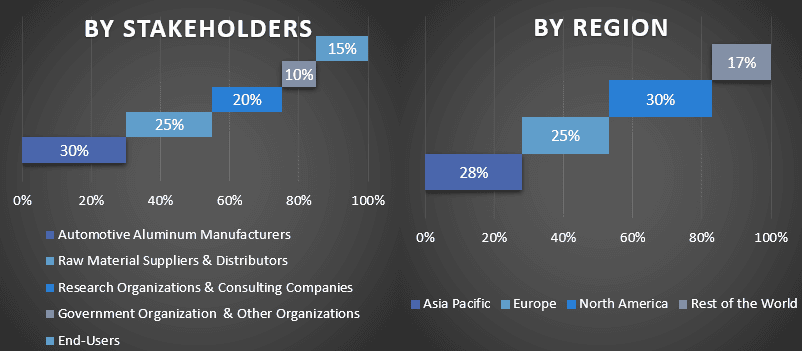
Market Engineering
The data triangulation technique was employed to complete the overall market estimation and to arrive at precise statistical numbers for each segment and sub-segment of the global automotive aluminum market. Data was split into several segments & sub-segments post studying various parameters and trends in the areas of product form, vehicle type, and application in the global automotive aluminum market.
The main objective of the Global Automotive Aluminum Market Study
The current & future market trends of the global automotive aluminum market were pinpointed in the study. Investors can gain strategic insights to base their discretion for investments on the qualitative and quantitative analysis performed in the study. Current and future market trends determined the overall attractiveness of the market at a regional level, providing a platform for the industrial participant to exploit the untapped market to benefit from a first-mover advantage. Other quantitative goals of the studies include:
- Analyze the current and forecast market size of the automotive aluminum market in terms of value (USD). Also, analyze the current and forecast market size of different segments and sub-segments
- Segments in the study include areas of product form, vehicle type, and application.
- Define and analysis of the regulatory framework for the automotive aluminum
- Analyze the value chain involved with the presence of various intermediaries, along with analyzing customer and competitor behaviors of the industry.
- Analyze the current and forecast market size of the automotive aluminum market for the major region.
- Major countries of regions studied in the report include Asia Pacific, Europe, North America, and the Rest of the World.
- Company profiles of the automotive aluminum market and the growth strategies adopted by the market players to sustain in the fast-growing market
- Deep dive regional level analysis of the industry
Related Reports
Customers who bought this item also bought

